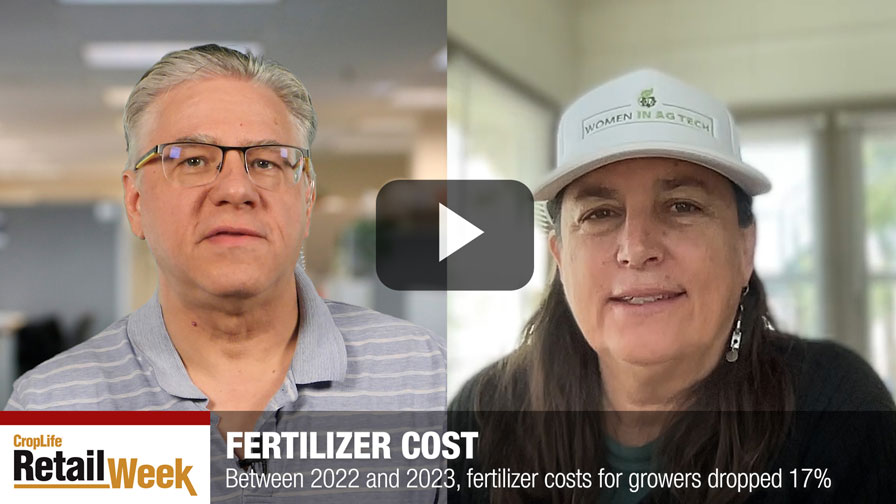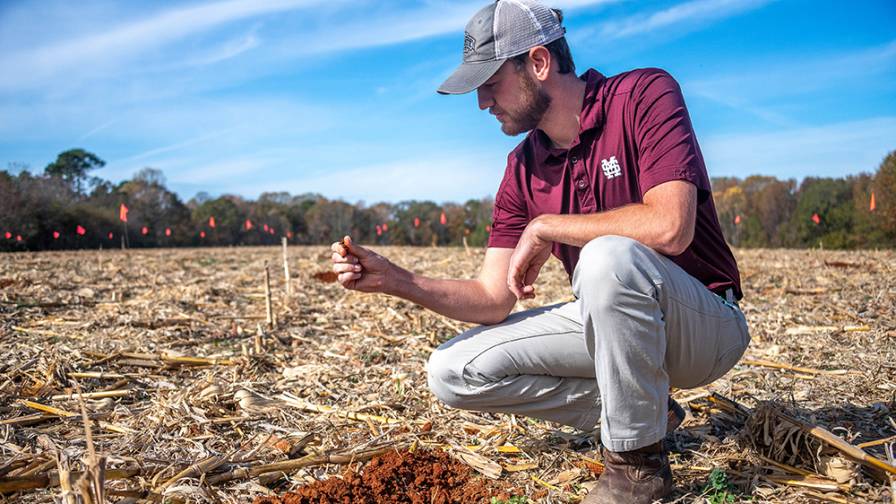Proper Spray Tank Cleanout
A clean sprayer is essential to prevent damage to susceptible crops from herbicide contamination. This is especially true today, when the challenge posed by the spread of herbicide-resistant weeds is demanding that growers and professional applicators use a wider variety of herbicides with different modes of action and chemistries, often within the same growing season and on the same fields.
To prevent the deposit of dried spray residue, sprayers should be cleaned out as soon as possible after use. In fact, a sprayer should never be left to sit overnight without cleaning. Filling the spray tank with water will prevent dried deposits from forming.
Each and every herbicide should have a recommended cleaning agent and cleaning procedure listed on the product label. The following is a general procedure to properly cleanout the spray system:
• Make sure the sprayer is completely drained of any remaining product. Use the boom cleanout option if your machine is so equipped.
• Remove and clean the product line strainers.
• Open the fresh water valve and move the main control valve from the spray position to the tank rinse position.
• Turn on the product pump and draw in the desired amount of clean water from the top tank. Once the proper amount of water is in, close the fresh water valve.
• With the pump running, operate each of the reload station valves to allow the fresh water to rinse those lines, including the bypass/reload valve, the chemical educator and sparger.
• Spray some of the fresh water through the booms and out the nozzle bodies. It is important to not forget the end-row nozzles if so equipped.
• Let circulate for 15 to 20 minutes.
• Repeat the above steps as directed by the chemical label.
• Spray out or drain to properly dispose of the rinse water. Rinsate is best disposed of by applying it to a labeled use site or crop.
• Operate the boom clean-out function (if equipped) to clean the booms of the remaining rinse water.
• When spraying products that are in suspension, remove the end caps from the boom plumbing sections and flush with fresh water. These areas have a tendency to trap products, and cleaning them is essential.
To avoid the potential for plant injury, special care must be given to cleaning out the spray system when using one sprayer to apply glyphosate and dicamba products. Unlike glyphosate, which is very water soluble and can easily be cleaned out of a sprayer with water, the dicamba products — or Plant Growth Regulators (PGR) — take a lot more time and care to remove. Examples of PGR herbicides include Clarity, Banvel and 2,4-D. It is important to note that a study conducted by the University of Tennessee shows that as little as 1/10,000th of an 8-ounce per acre dicamba rate can produce injury symptoms on soybeans.
Being Very Cafeful Between Cleanings
Equally important: Injury can range from cosmetic leaf damage to 80% yield loss, depending on the amount of PGR residue in the tank and the crop growth stage at the time of application. The reason for this is that PGR herbicides readily adhere to the inside of a sprayer, particularly to plastic and rubber parts, and they cannot be completely and successfully rinsed out of a sprayer with water only.
As it turns out, glyphosate is a very effective tank clean for PGR herbicides. Therefore, the threat of crop injury can be increased when a sprayer with a glyphosate herbicide load is left standing overnight — or even for a few hours.
PGR herbicides need a solution of household ammonia and water or a commercial tank cleaner to successfully remove all residue. These materials convert the insoluble PGR to a water-soluble ammonium salt.
The main point to remember is that a quick rinse with these agents will not typically do a complete job. A good length of time is required for the ammonia to dissolve the PGR herbicides from the plastic and rubber components of the sprayer. Again, the best source of information to properly neutralize a chemical is on the chemical label.
Close attention to all of these details will minimize the threat of crop injury due to herbicide contamination. This has never been more important than it is today, when a larger arsenal of different herbicides are being applied across an increasing number of acres and crops to ensure the best possible weed-management programs.





